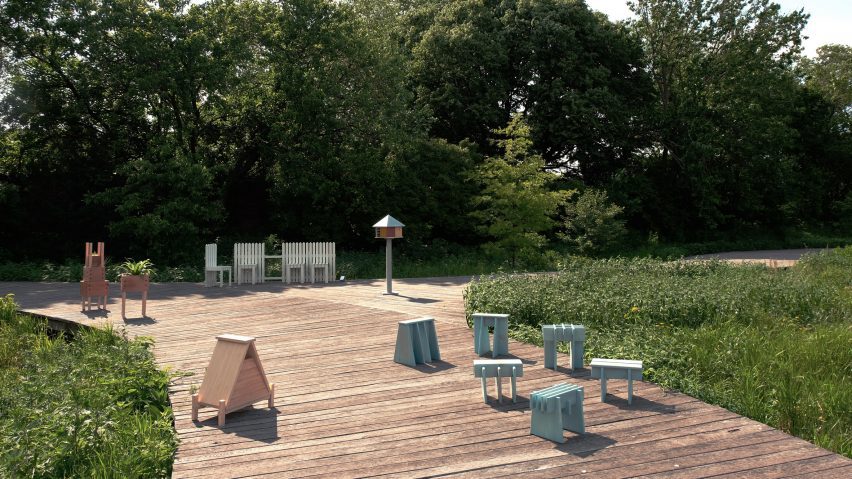
Public furniture design exhibition in Brooklyn highlights "public access not private excess"
For New York's design week, local designer Jean Lee of Furnishing Utopia has created an exhibition of public-oriented design at the Naval Cemetery Landscape in Williamsburg, Brooklyn.
Called Public Access, the exhibition features projects designed for public use and comprises two sections, a physical outdoor component and an indoor installation with documentation and references at Brooklyn gallery and bookshop Head Hi.
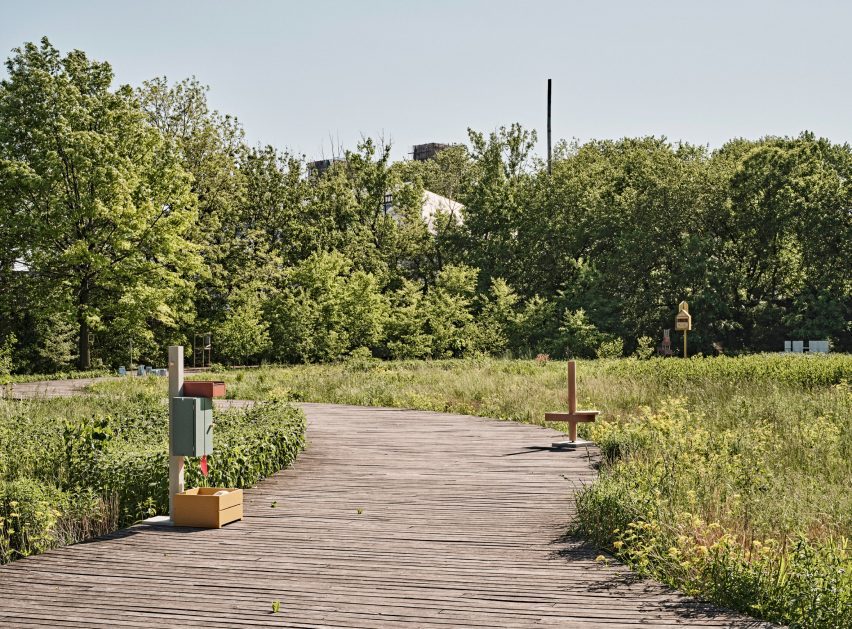
In total, the exhibition features 35 projects designed to respond to locales in the United States, United Kingdom, Vietnam and nine other nations, selected from an open call put out last year.
A selection of these have been presented at the boardwalk at the Naval Cemetery Landscape in Brooklyn, a park and native plant landscape.
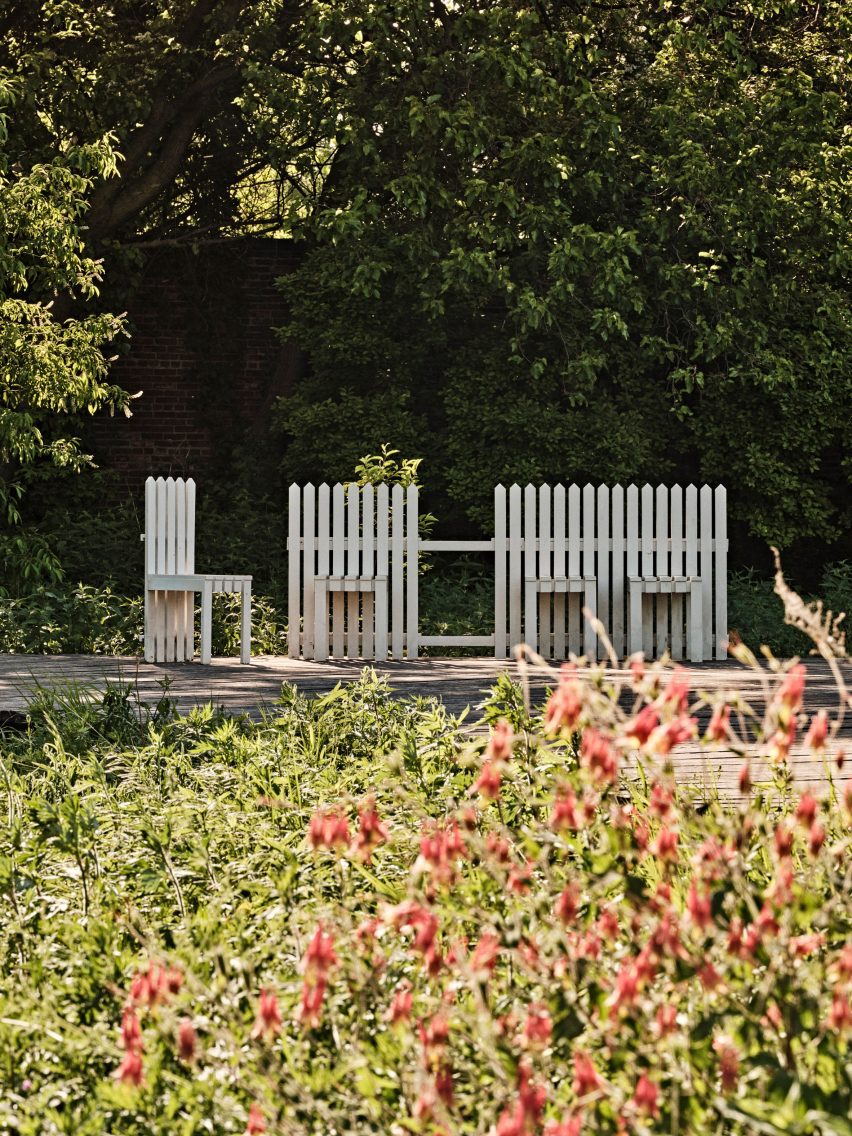
These outdoor projects range from bird feeders and seed libraries to benches and community fridges, all made from simple materials meant to show "how can design serve more as like a point of empathy" according to curator Jean Lee.
The indoor portion of the exhibition features photography and documentation of the remaining projects, with a map showing the various international locations where they are located.
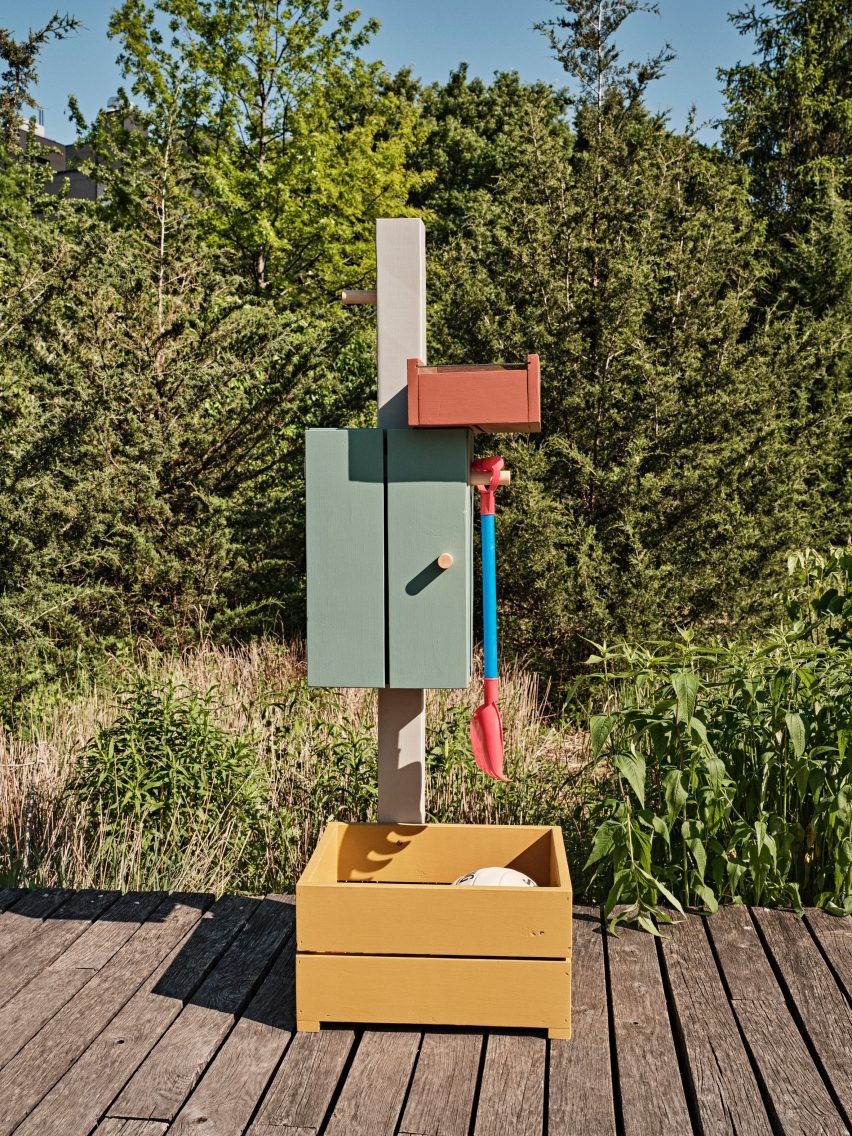
All of the schematics for the designs have also been made available online so that they can be repeated and modified for different contexts.
Curator Jean Lee, who is the co-founder of Brooklyn design studio Ladies and Gentlemen, said that the designs were meant to be a celebration of "ad hoc" design practices, public space and "empathy".
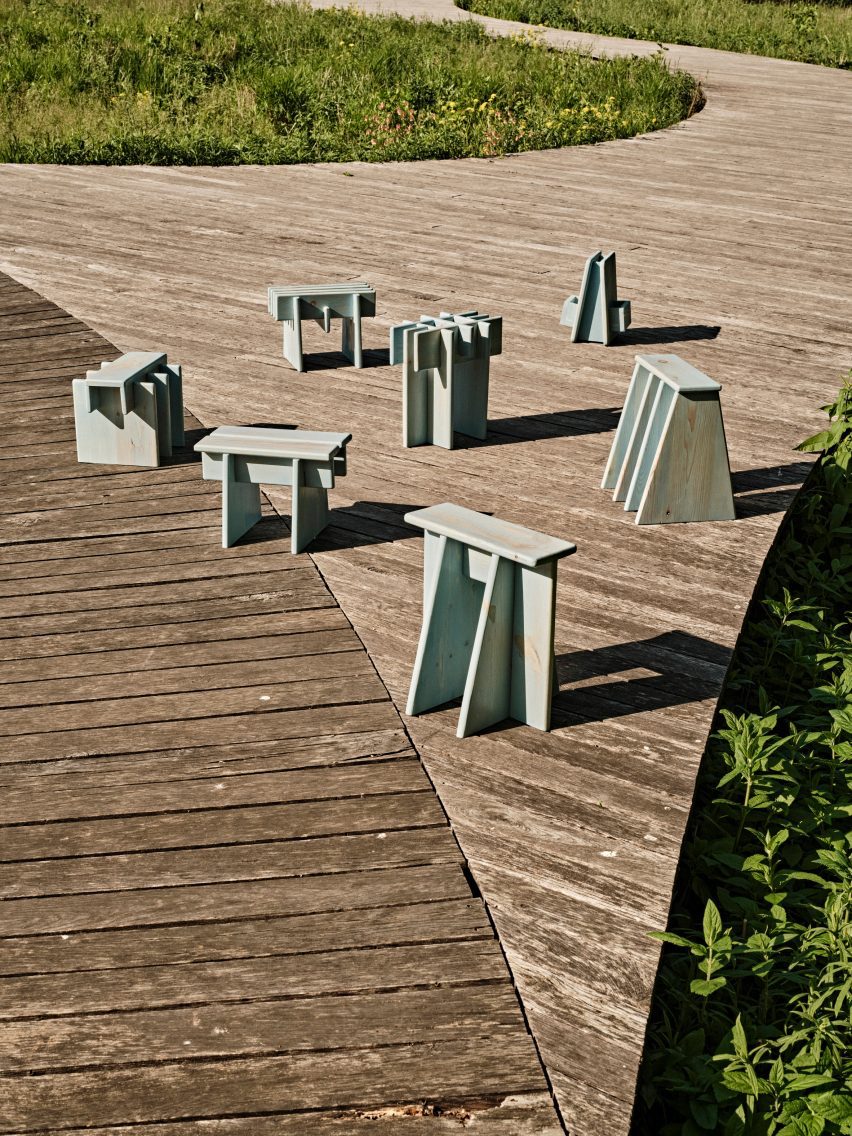
"A lot of all these public access projects are simply designing something for somebody else – it could be a stranger," she told Dezeen.
"It's an invitation to interact and engage in a place that perhaps didn't have any design. It's a reimagining of what place to be."
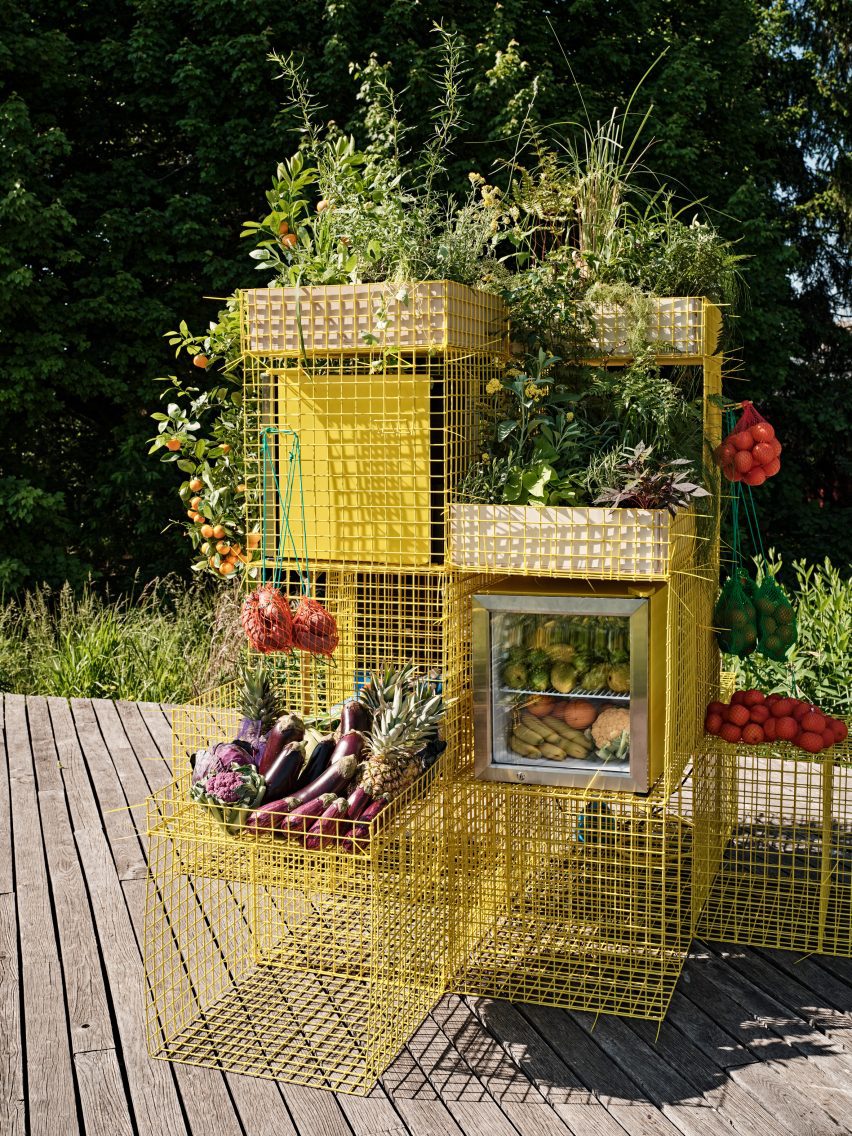
The impetus for the project came both from the Covid-19 pandemic when Lee noticed that people were spending more time interacting with local environments and from a desire to "explore design without commerce".
"We're not criticizing the industry by any means, but simply want to expand the lens to look at how design permeates throughout life," Lee told Dezeen.
"It's where people decide to use something else and repurpose it and then fix it, and over time it becomes a sort of evolution of different people putting their hands on something – and there's no authorship, it's not about owning, or taking credit for anything."
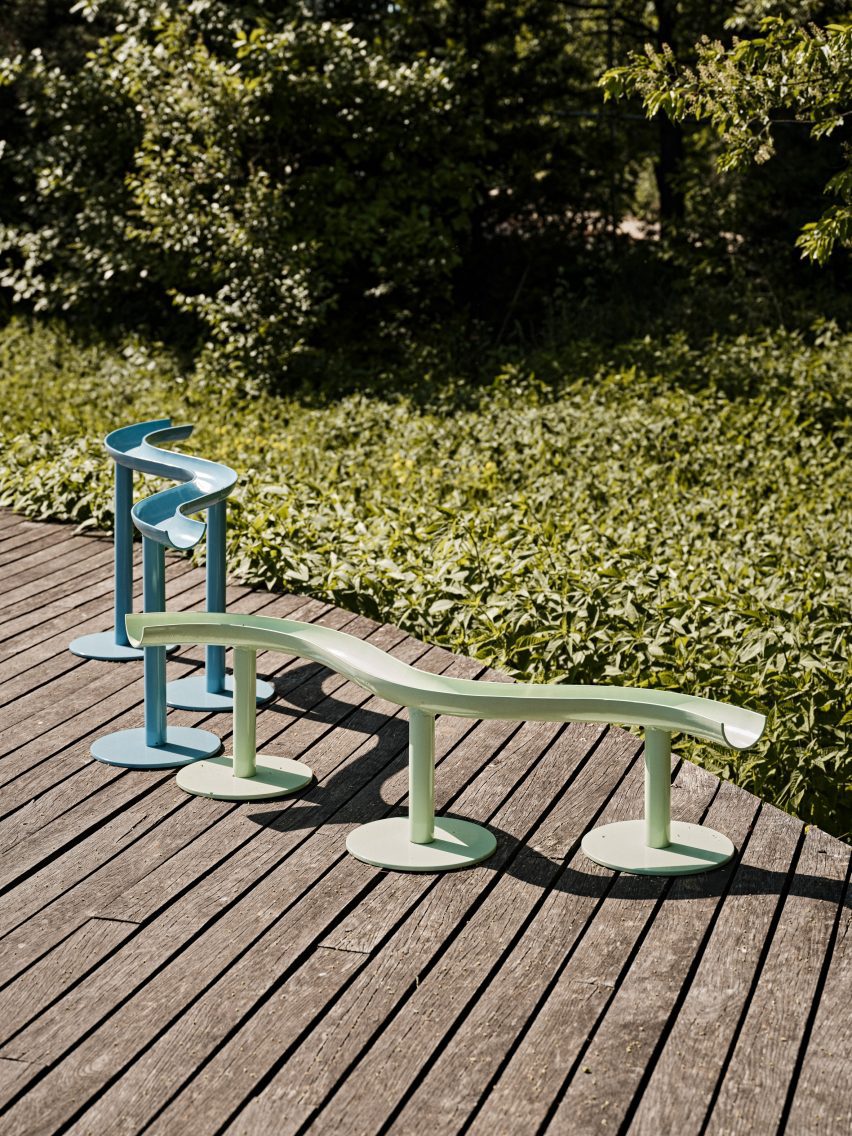
"It's public access, not private excess," added Head Hi founder Alexandra Hodkowski.
Lee also noted that it was important that designers engage with the communities they were designing for, and encouraged them to get permission and to understand the needs of the locale, adding that sometimes "designers can overthink" projects and design without assessing the actual needs or desires of a place.
The point was to facilitate interaction and not to "dictate" it, she said.
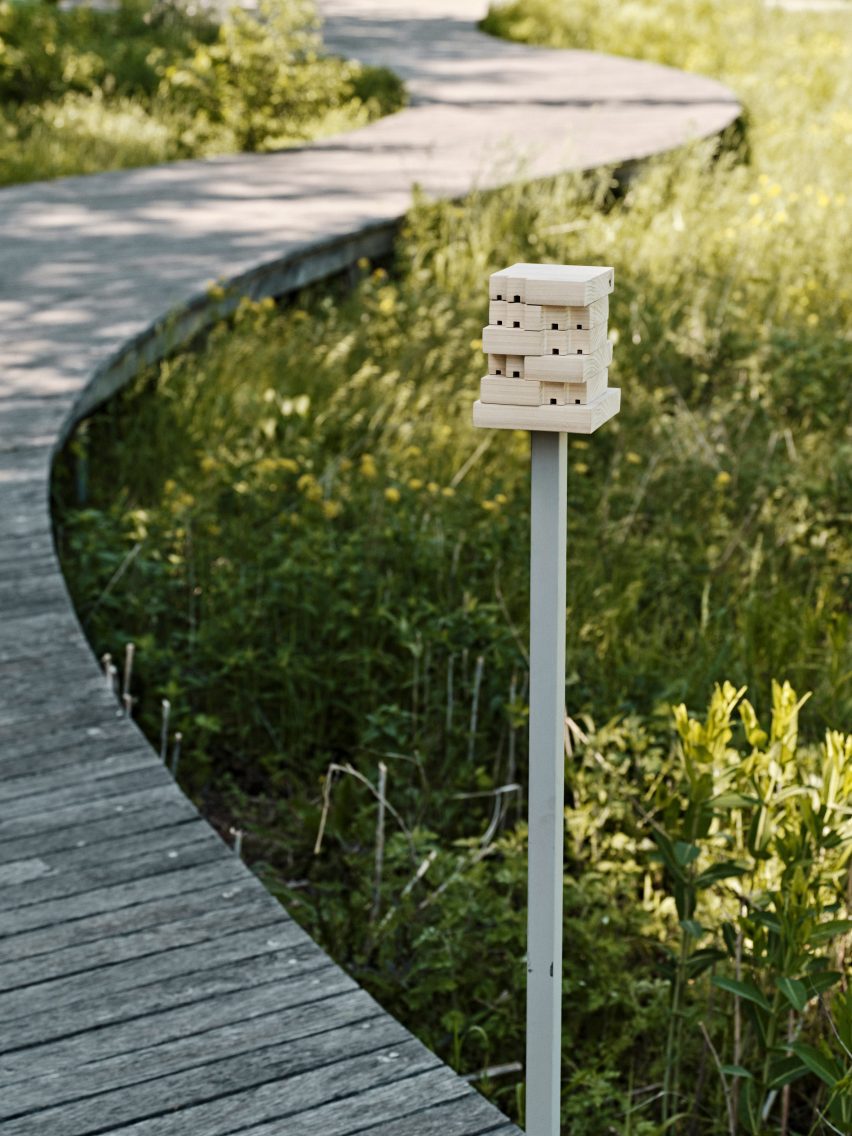
A number of notable designers contributed to the outdoor installation, which featured designs built for animals as well as humans.
Mexican designer Jorge Diego Etienne created a small wooden shelter for opossums, while Lee's own studio Ladies and Gentlemen created a public bookshelf and lost-and-found meant to hold a variety of objects.
American artist Allan Wexler created public seating with detachable chairs that line up to form a white picket fence.
New York-based Various Projects worked with the local organization One Love Community to create a modular public fridge made from painted lobster cages sourced from Maine.
Lee is part of Furnishing Utopia, a collective that undersigned the exhibition, and takes inspiration from the simple, community-oriented designs of the Shakers, a religious community known for its craft and communal design.
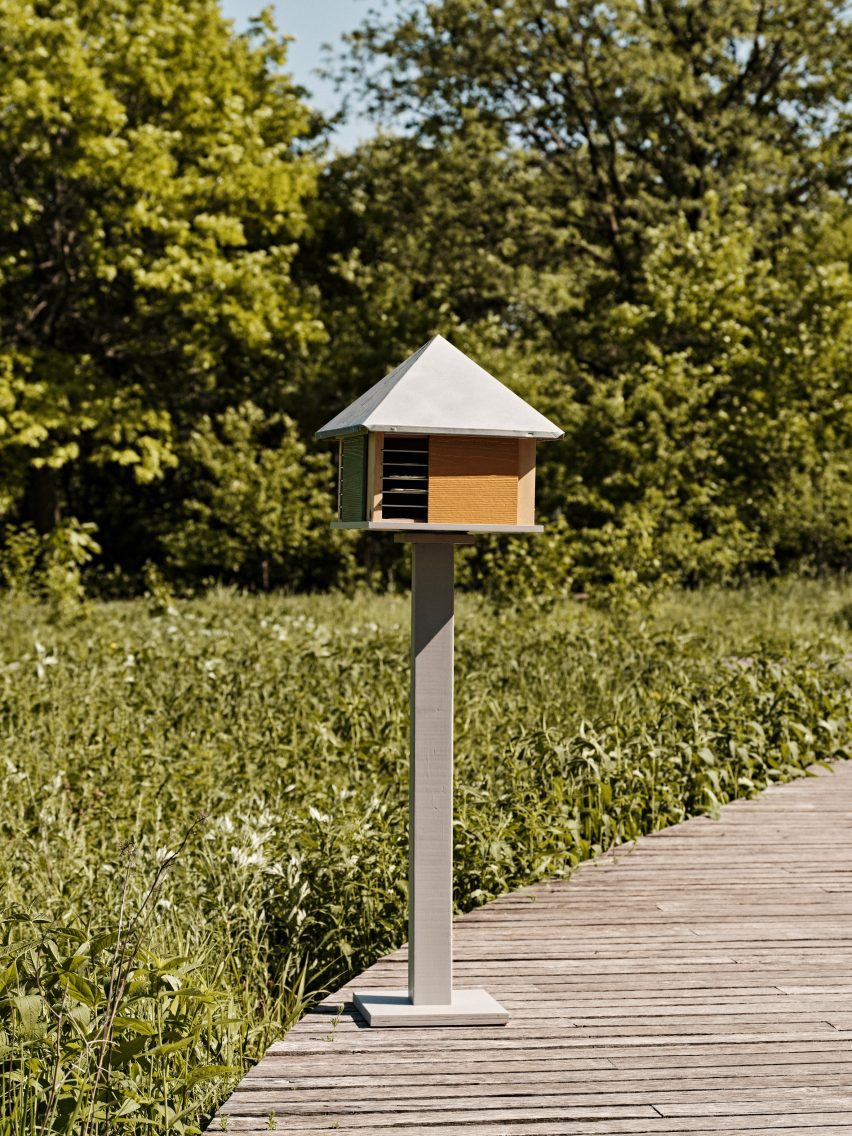
The organisation has put on a number of other shows celebrating simple, non-commercial design initiatives.
The photography is by John Daniel Powers.
Public Access is on view at the Naval Cemetery Landscape from 18 May to 25 May, while the exhibition at Head Hi is on view from 18 May to 3 June. For more exhibitions, talks and events during New York's design week, visit Dezeen's dedicated NYCxDesign guide.